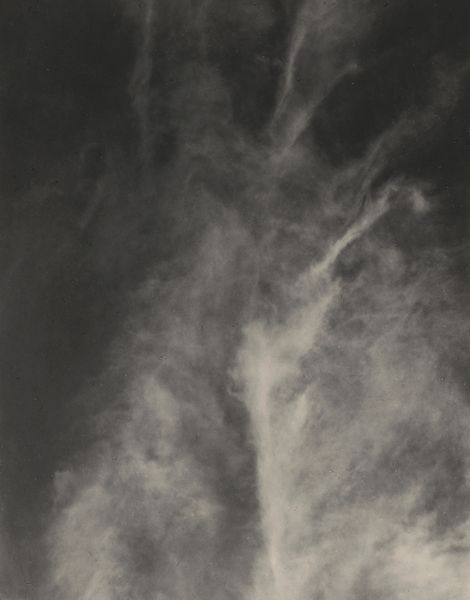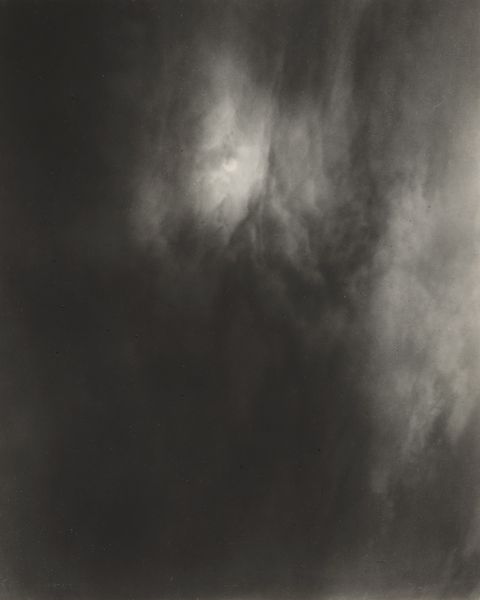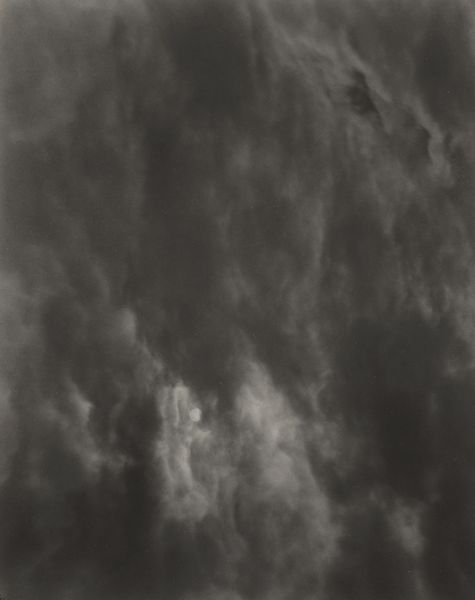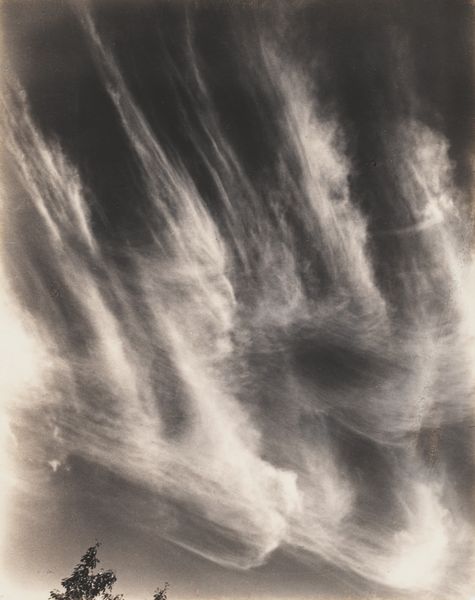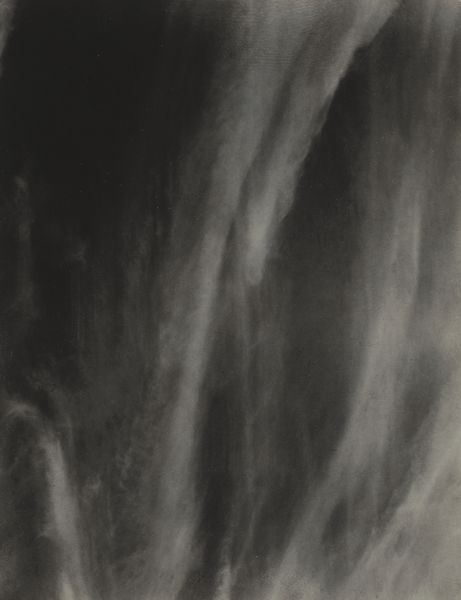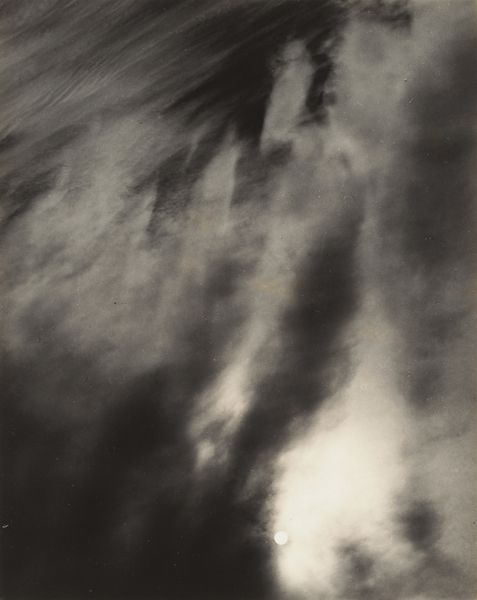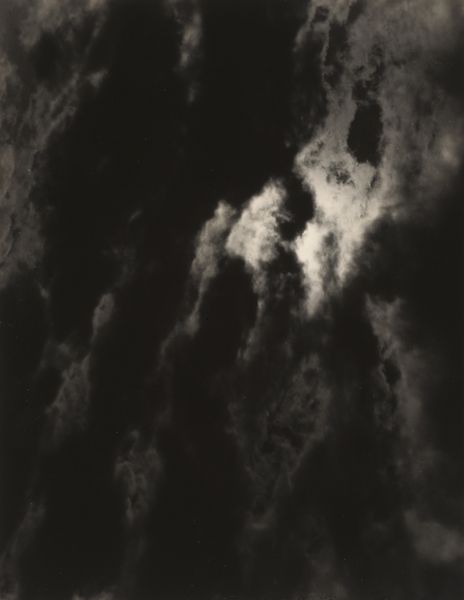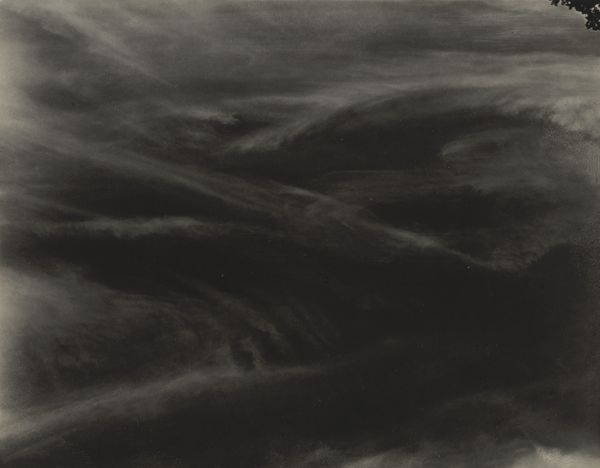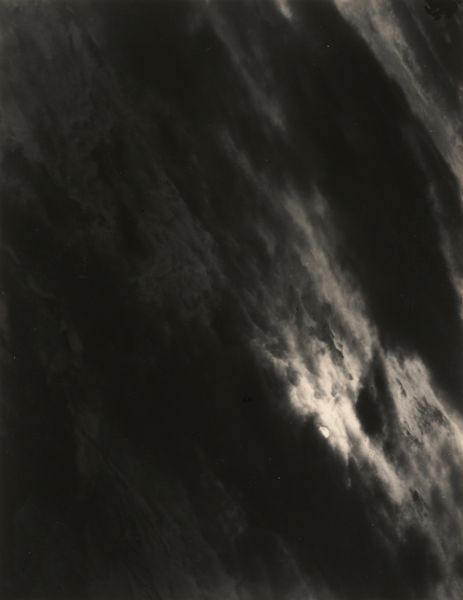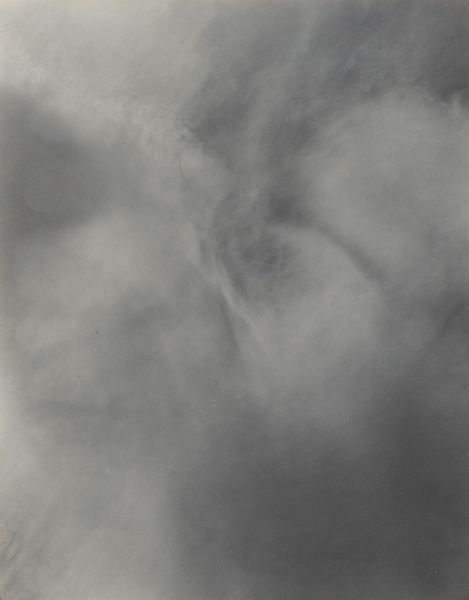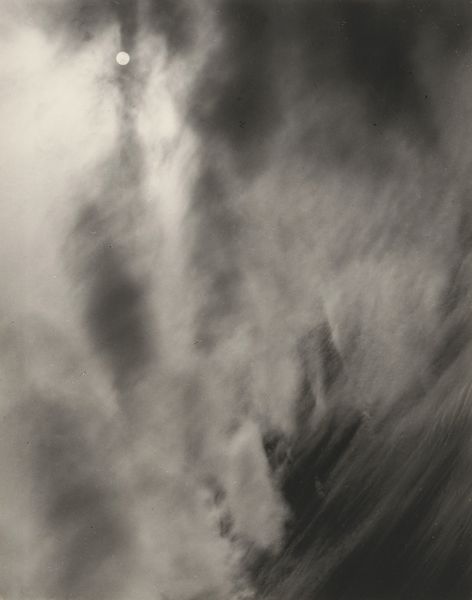
Dimensions: sheet (trimmed to image): 11.8 x 9.3 cm (4 5/8 x 3 11/16 in.) mount: 34.2 x 27.5 cm (13 7/16 x 10 13/16 in.)
Copyright: National Gallery of Art: CC0 1.0
Curator: It’s hard not to feel immediately soothed by the gentle gradations in Alfred Stieglitz’s "Equivalent," created around 1925. This particular silver gelatin print invites contemplation. Editor: Soothed, perhaps, but there's an ambiguity too. A quiet tension between the dark, looming mass at the top and these wispy, ethereal forms that rise from below. It feels like something just out of reach, a barely contained force. Curator: Absolutely. That tension, as you say, speaks volumes. Stieglitz believed these photographs of clouds weren’t merely representational; he saw them as equivalents for his own deepest emotions, his spiritual states. They're visual metaphors. Editor: And he deliberately chose a subject so readily available, so universal. Clouds. Anyone can look up and find their own meaning mirrored in them. Makes me wonder how the average gallery goer responded. Were they in on the metaphor or did it just seem like an artistic indulgence? Curator: That's a crucial question. The social context mattered enormously to Stieglitz. He wanted to elevate photography to the level of fine art. This abstraction, moving away from traditional pictorialism, challenged the established norms. Some critics saw profundity; others dismissed it as vague or pretentious. Editor: And even now, looking at it, part of me wrestles with that same uncertainty. Is it genuinely profound, a visual expression of the human soul? Or is it an experiment in aesthetics, a demonstration of photography's capabilities? Maybe it can be both. There is an evocative power to these shapes regardless of any stated intentions by the artist. Curator: Precisely. That interplay of intent and perception shapes the ongoing dialogue around this work. Consider its impact on later movements too – the atmospheric quality resonates with Abstract Expressionism and beyond. These ‘equivalents’ allowed viewers to engage in a deeper, more personal connection to art itself. Editor: It does get one thinking about the shifting boundaries of representation – how something as seemingly simple as a photograph of clouds can open up vast emotional and intellectual terrain. Makes me wonder if we’re still figuring out how to truly *see* work like this. Curator: Yes, and I'm sure that these photographs of the sky provided a new direction for the understanding of modern art and representation itself. Editor: I see now it’s less about Stieglitz’s emotions and more about *ours*, a conversation about feeling, played out on a celestial stage.
Comments
No comments
Be the first to comment and join the conversation on the ultimate creative platform.
